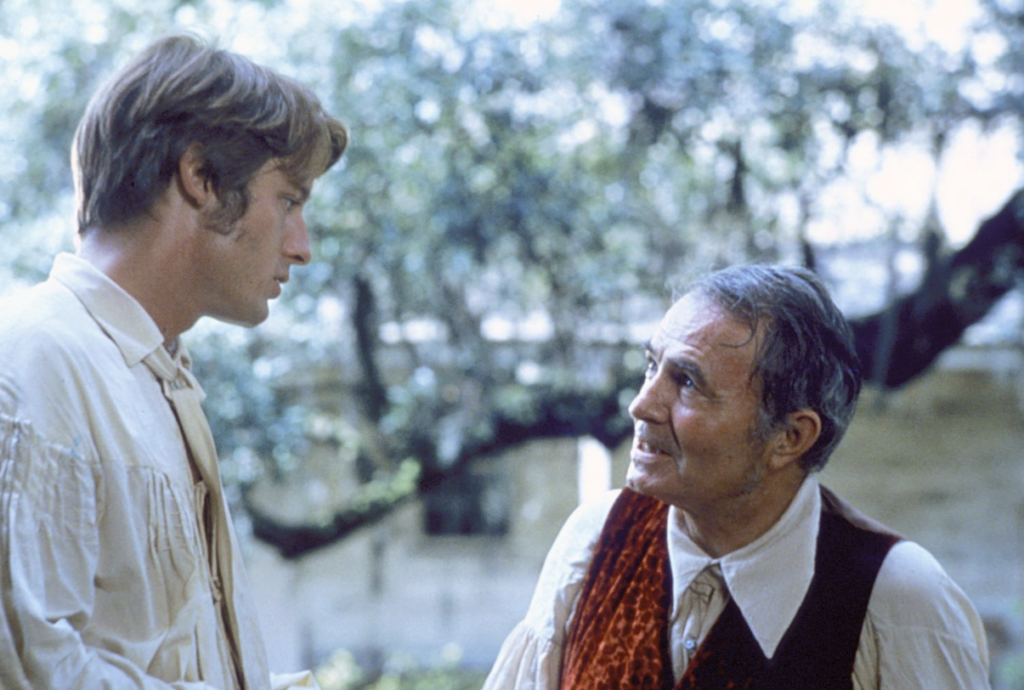Highlights and Lowlights of the ‘New Hollywood’ Movement Land at Manhattan’s 53rd Street
Among the offerings is a picture whose reputation — oh, let’s call it for what it is, infamy — precedes it: ‘Mandingo’ (1975).

‘Paramount in the 1970s’
Museum of Modern Art
August 21-September 15
Not long ago in these pages I had occasion to write about convolutions of taste, of how standards over time are rendered elastic or, perhaps it is better said, absorbent. An institution of international influence, the Museum of Modern Art, recently saw fit to honor “The Texas Chainsaw Massacre” (1974), among the least pleasant and once scurrilous of entertainments. Now the same venue is presenting “Paramount in the 1970s,” an overview of an era in which, according to the museum’s press materials, a “‘New Hollywood’ offered mainstream audiences adventurous, often controversial visions tinged with violence, paranoia, and self-reflection.”
Coming after the break-up of the studio system and on the heels of the cultural shifts of the 1960s, Hollywood was at sea. Paramount hired a 36-year-old former actor and presumed wunderkind, Robert Evans, to usher in the future. He didn’t do a bad job: Among his box office successes was putting into motion Francis Ford Coppola’s “The Godfather” (1972). A film critic for the New Yorker, Pauline Kael, dubbed it among “the best popular movies [to] come out of a merger of commerce and art.” Mr. Coppola’s film continues to be held in high regard, but have you watched it recently? “Lumpish” would be a strong commendation.
“Paramount in the 1970s” features 25 films of varying merit, including the first and second iterations of “The Godfather.” Also featured are essays in paranoia like “The Parallax View” (1974) and “Three Days of the Condor” (1975), Gordon Parks’s biopic about the folk singer Huddie Ledbetter, “Leadbelly” (1976), and a documentary known largely for its Stevie Wonder soundtrack, “The Secret Life of Plants” (1978). Then there’s “Mandingo” (1975), a picture whose reputation — oh, let’s call it for what it is, infamy — precedes it. Fluctuations in critical fashion make for strange bedfellows. The film has since become less infamous.
Upon its initial release, “Mandingo” proved popular at the box office — so much so, it prompted a sequel, “Drum” (1976) — but it was almost roundly vilified by critics. Roger Ebert of the Chicago Sun-Times dubbed it “a wretched potboiler” and “racist trash.” Variety pegged it as “embarrassing and crude.” That edict remains the case for many cineastes and movie professionals. At the website Trailers From Hell, an Oscar-nominated screenwriter, Josh Olson, apologizes for the film “on behalf of all the white people in Hollywood.”

Still, opinions about “Mandingo” have changed over time. A critic of no mean intellect, Jonathan Rosenbaum, described it as “the most neglected and underrated Hollywood films of its era.” The historian Donald Bogle, whose 1973 book “Toms, Coons, Mulattoes, Mammies & Bucks: An Interpretive History of Blacks in American Films” is a seminal text, stated on X of “Mandingo” that it “uncovers the sadistic brutalities that Hollywood’s traditional plantation dramas ignored or glossed over. It’s rarely seen.” That was seven years ago. Now it can be seen at Manhattan’s 53rd Street.
“Mandingo” is sometimes lumped under the rubric of “Blaxploitation,” but, really, it’s more mainstream than that. A major studio produced the film. Its director, Richard Fleischer, was regularly entrusted with big-ticket properties like “20,000 Leagues Under the Sea” (1958), “Fantastic Voyage” (1966), and “Tora! Tora! Tora!” (1970). The adaptation of Kyle Onstatt’s 1957 book of the same name was by the screenwriter for “Serpico” (1973) and “Saturday Night Fever” (1977), Norman Wexler. And then it included that consummate actor of the silver screen, James Mason. I mean, we’re talking class here.
But, no, not really. Mason plays the rheumatic Warren Maxwell, the scion of a slave-breeding family that’s seen better days. His son Hammond (Perry King) is handsome, hobbled, and a casual rapist of the family’s female slaves. Papa is eager to marry off Hammond to a cousin, Blanche (Susan George), to propagate the family name; he also wants to put some distance between his son and one slave in particular, Ellen (Brenda Sykes). Blanche and Hammond’s marriage is unconsummated and unhappy.
In the meantime, Hammond up and purchases Mede (Ken Norton), a “mandingo” who adds honor to the family name as a champion fighter. All the same, Hammond dishonors the name by consorting with Ellen. But then a drunken Blanche, in a vengeful mood, asks Mede to come to her boudoir. …
Did I say “Mandingo” wasn’t an exploitation movie? With its abundance of full-frontal nudity and emphasis on physical abasement, the picture skirts porn. Revisionists laud the abundant degradations and over-the-top violence as appropriate to the subject of slavery, and they have a point. But here the aforementioned are rendered sensationalistic and lurid, being more a puritanical come-on than a moralistic turn-off. Even the most egregious low-budget trash leaves less grime on one’s soul than “Mandingo.”
That, and the acting is awful. Mason hams it up in the grand cause of cashing a check, Ms. George huffs-and-puffs like a diva, Mr. King is unsure of how to gauge his character, and Norton — well, his true metier was boxing. The honey-drenched cinematography is the least of this picture’s problems.
Let’s say this for “Mandingo”: the opening song is great. Soundtrack veteran Maurice Jarre insisted that one and only one artist, Muddy Waters, could do justice to his song, “Born In This Time.” That this tawdry entertainment is ushered in by the indelible gravitas of a great bluesman is, to put it mildly, ironic. Whether it’s an irony worth savoring in one of MoMA’s cushy seats is another question.

